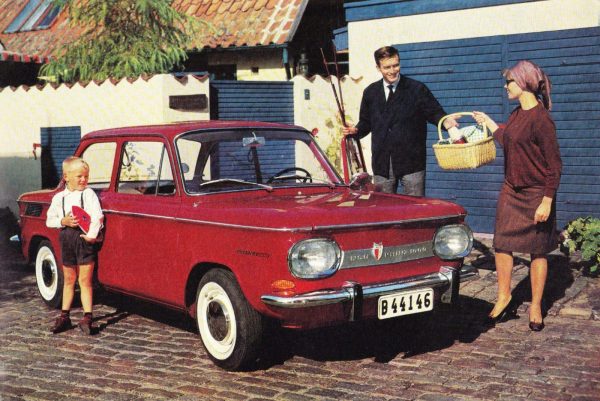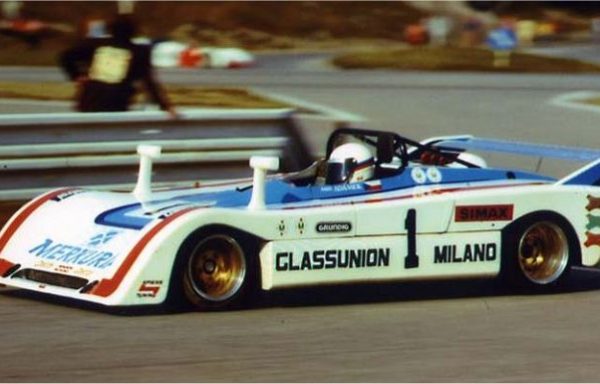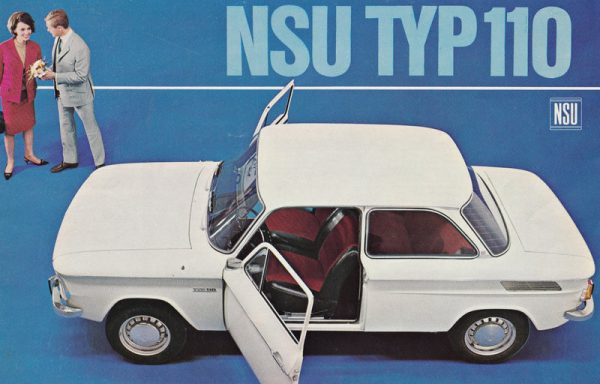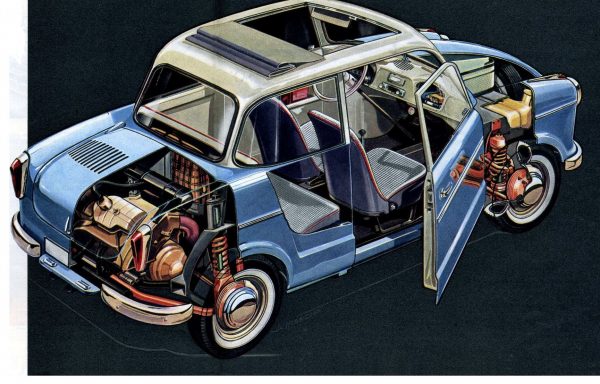The NSU Prinz 1000, released in the early 1960s, marked a significant evolution for NSU as it transitioned from microcars to compact sedans capable of mainstream appeal and performance. The Prinz 1000 and its high-performance variants played a key role in building NSU’s reputation as a manufacturer of innovative and agile small cars, which later paved the way for its renowned TT and TTS racing models.
Historical Background
Launched in 1964, the NSU Prinz 1000 aimed to broaden NSU’s customer base by offering a more versatile and powerful vehicle than its predecessors. NSU engineers, renowned for their technical creativity, equipped the Prinz 1000 with a rear-mounted, air-cooled engine—a departure from the front-engined designs of other compact cars at the time. This layout improved weight distribution, giving the car better traction and handling, especially in turns.
The model gained popularity not only as a reliable daily driver but also as a foundation for motorsport. Its lightweight, rear-engine design made it popular among racers and tuners, who soon realized its potential on racing circuits. The Prinz 1000’s success in motorsports contributed to NSU’s reputation and inspired the development of the NSU TT and TTS models, which would later become legends in the touring car and hill-climb racing scenes.
Technical Specifications
The NSU Prinz 1000 was modest in size but packed with advanced engineering for the era. Here are its key technical details:
- Displacement: 996 cc
- Compression Ratio: 8.3:1
- HP Output: Approximately 43 hp at 5,500 rpm
- Torque Output: Around 7.3 kg/m at 3,500 rpm
- Transmission: 4-speed manual
- Length: 3,620 mm
- Width: 1,475 mm
- Height: 1,325 mm
- Weight: 670 kg
- Wheelbase: 2,200 mm
- 0-100 km/h: Approximately 20 seconds
- Top Speed: 135 km/h
Design and Mechanical Features
The Prinz 1000’s layout reflected NSU’s commitment to innovation. Its rear-engine, rear-wheel-drive (RR) configuration was unconventional among compact cars of the era but provided an agile handling experience. The design made the Prinz 1000 easy to maneuver and stable in sharp turns, traits that contributed to its popularity in motorsport.
- Engine Design:
- The 996 cc engine was an inline-four, air-cooled, four-stroke engine known for its durability and efficiency. Its compact and lightweight design made it an ideal choice for a rear-mounted configuration, enhancing the car’s balance and handling.
- Suspension System:
- Front Suspension: The Prinz 1000 featured a MacPherson strut setup at the front, providing excellent stability and a smoother ride.
- Rear Suspension: The rear utilized a trailing arm setup, optimized to handle the engine’s weight while enhancing traction.
- Braking System:
- The Prinz 1000 was equipped with drum brakes at the front and rear, which were sufficient for the car’s light weight and modest power. However, later high-performance models like the TT and TTS were upgraded with front disc brakes to handle increased power.
- Body and Interior Design:
- The body was simple yet robust, with a minimalist interior focused on functionality. The car’s small size and large windows contributed to excellent visibility, and its ergonomic layout made it comfortable for daily driving.
Motorsports Influence and Modifications
As the popularity of the Prinz 1000 grew, so did the number of aftermarket and factory modifications geared toward racing. Many tuners and racing enthusiasts upgraded the Prinz 1000’s engine, suspension, and braking system to maximize its potential. Here are some notable modifications made by racers:
- Engine Tuning: Tuners often increased the displacement and compression ratio, pushing the power output significantly above the stock 43 hp.
- Suspension Adjustments: Modified Prinz 1000s often had stiffer suspensions and a lower ride height, improving handling and stability at high speeds.
- Braking Upgrades: To handle the increased power, many racing Prinz 1000s were fitted with front disc brakes, a feature that became standard on the more powerful NSU TT and TTS models.
- Body Lightweighting: Racers often stripped the car of non-essential interior components and installed lighter body parts to reduce overall weight, enhancing acceleration and agility.
Legacy and Impact
The NSU Prinz 1000 remains an important model in NSU’s history, showcasing the brand’s ability to combine performance and compact design. While it was primarily a practical, everyday car, its robust engineering and unique layout allowed it to excel on the racetrack. The car’s success contributed to NSU’s growing influence in the automotive industry, ultimately leading to the release of even more performance-oriented models like the NSU TT and TTS, which would go on to dominate hill-climb and touring car races across Europe.
Today, the Prinz 1000 is cherished by enthusiasts and collectors for its historical significance, innovative design, and racing pedigree. It stands as a testament to NSU’s forward-thinking engineering and serves as a beloved piece of automotive history, especially among fans of German compact cars and vintage motorsport.




